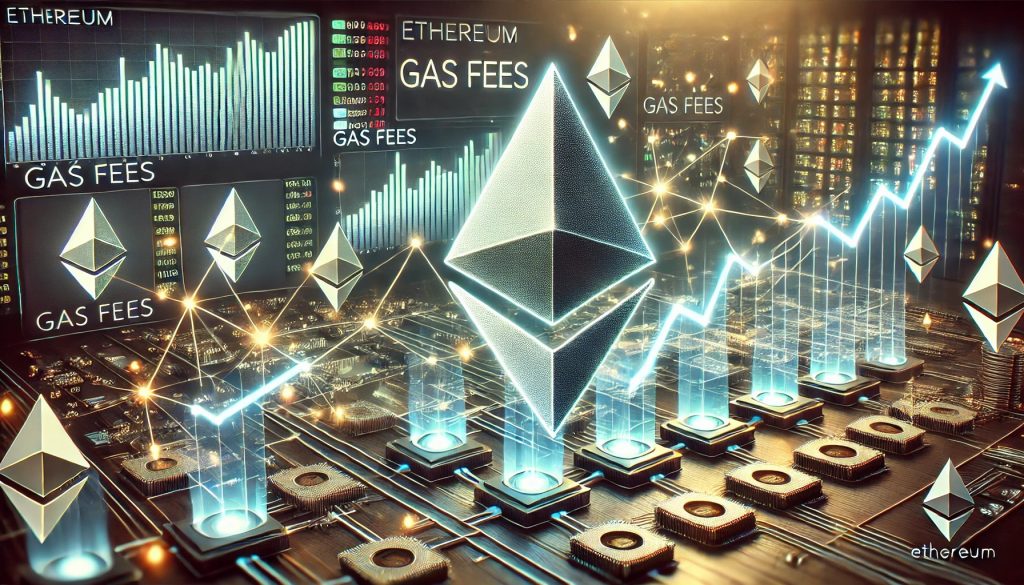Ethereum, the world’s second-largest cryptocurrency by market capitalization, has always faced scrutiny regarding its gas fees. These fees, essential for processing transactions on the Ethereum network, have historically been a significant barrier to widespread adoption, particularly during periods of high network congestion. However, in the last week, a surprising shift occurred as Ethereum’s gas fees dropped to historically low levels, dipping below 1 gwei. Such a phenomenon hasn’t been seen since the early days of the Ethereum blockchain.
This decline in gas fees is being hailed as a victory for scalability solutions like Layer 2 (L2) networks. Platforms like Arbitrum and Optimism have emerged as key players, offloading a substantial portion of Ethereum’s transaction processing and easing congestion on the Layer 1 (L1) mainnet. But while the reduction in gas fees is a welcome development for users, it brings about new questions and challenges, particularly in terms of fee volatility and Ethereum’s long-term economic model, especially its deflationary mechanism.
In this blog post, we’ll dive deeper into the dynamics of Ethereum’s gas fees, explore the reasons behind the recent drop, and examine the broader implications for Ethereum’s ecosystem, including its impact on the ETH burn rate, scalability, and the network’s competitiveness in the ever-evolving blockchain landscape.
What Are Ethereum Gas Fees and Why Do They Matter?
Before we explore the reasons for the recent drop in gas fees, it’s important to understand what gas fees are and their role in the Ethereum ecosystem.
In the simplest terms, gas fees are the costs associated with executing transactions on the Ethereum network. These fees compensate miners (now validators post-Merge) for the computational power required to validate and process transactions. Gas fees are denominated in gwei, which is a small fraction of ETH (1 gwei = 0.000000001 ETH). The amount of gas required for a transaction depends on its complexity, with more complicated transactions like smart contracts or decentralized finance (DeFi) interactions requiring higher gas fees.
Gas fees are essential to the network’s security, incentivizing validators to maintain the integrity of the blockchain by processing transactions. However, during periods of high network activity, gas fees can skyrocket, pricing out smaller users and making Ethereum less accessible. This has been a persistent challenge for Ethereum, particularly during the DeFi boom and NFT frenzy, where fees for a single transaction could reach hundreds of dollars.
Why Have Ethereum Gas Fees Dropped Recently?
The recent drop in Ethereum’s gas fees to under 1 gwei is a significant development. This reduction can primarily be attributed to the growing adoption of Layer 2 solutions such as Arbitrum, Optimism, and Base. These networks are designed to operate on top of Ethereum’s Layer 1 chain, processing transactions off-chain and then settling them on-chain. This offloading process reduces congestion on the Ethereum mainnet, thereby lowering gas costs for users.
- Layer 2 Rollups:
- Arbitrum and Optimism are two of the most popular L2 rollups that have been instrumental in reducing Ethereum’s gas fees. These rollups bundle multiple transactions into a single batch, which is then submitted to Ethereum’s mainnet. This process significantly reduces the amount of data that needs to be processed on the mainnet, resulting in lower gas fees for each individual transaction.
- Additionally, these rollups are fully compatible with Ethereum’s smart contracts, making it easy for developers to migrate their dApps (decentralized applications) from Ethereum to these Layer 2 platforms.
- Reduced Network Activity:
- Another factor contributing to the lower gas fees is the reduction in network activity, particularly in the NFT and DeFi sectors. While Ethereum remains the dominant platform for DeFi and NFTs, some activity has migrated to other blockchains such as Solana and Avalanche, both of which offer faster and cheaper transaction processing. This shift in activity has led to less congestion on Ethereum’s mainnet, resulting in lower gas fees.
- Improvements in Scalability:
- The Ethereum network has been undergoing continuous upgrades aimed at improving its scalability. One of the key initiatives is the rollup-centric roadmap, which prioritizes Layer 2 scaling solutions as the primary method for reducing gas fees while maintaining security and decentralization. The Dencun upgrade, expected to roll out in the coming months, is anticipated to further enhance Ethereum’s scalability, allowing the network to process over 100,000 transactions per second. This will likely continue the trend of lower gas fees, even as Ethereum’s ecosystem grows.
The Volatility of Ethereum Gas Fees: Will They Stay Low?
Despite the recent drop in gas fees, Ethereum’s gas fee volatility remains a concern. Historically, Ethereum’s gas fees have been subject to sudden spikes, particularly during periods of high demand. For example, when a popular NFT project or DeFi protocol launches, network congestion can cause gas fees to soar, sometimes reaching as high as $200 per transaction. This volatility is largely due to Ethereum’s auction-based fee model, where users bid for priority in having their transactions processed.
While Layer 2 solutions help mitigate some of this volatility, it’s important to note that gas fees are not entirely predictable. Network activity can fluctuate rapidly, and even in periods of overall low demand, a sudden influx of transactions can lead to significant fee increases.
The Impact of Lower Gas Fees on Ethereum’s Burn Rate
One of the most important consequences of lower gas fees is its effect on Ethereum’s burn rate. Introduced as part of the EIP-1559 upgrade in August 2021, Ethereum’s burn mechanism automatically burns a portion of the gas fees paid in every transaction. This reduces the total supply of ETH over time, creating a deflationary pressure that many in the Ethereum community see as a critical component of Ethereum’s long-term value proposition.
However, with gas fees at historically low levels, the amount of ETH being burned has also decreased. This has raised concerns among those who support Ethereum’s sound money narrative, which relies on a high burn rate to offset the issuance of new ETH. Currently, the ETH inflation rate has increased slightly to around 0.74%, introducing approximately 16,996 ETH into circulation each week. If gas fees remain low for an extended period, Ethereum’s inflationary pressure could increase, potentially undermining the network’s deflationary goals.
Proposals to Address the Declining Burn Rate
In response to the declining burn rate, there have been several proposals to adjust Ethereum’s fee structure, particularly concerning Layer 2 blob fees. Currently, L2 networks pay blob fees to the Ethereum mainnet, but these fees are not burned. Instead, they are distributed to validators as compensation for processing the transactions. Some in the Ethereum community have proposed increasing blob fees and subjecting them to the same burning mechanism as gas fees on the mainnet. This would help increase the overall burn rate and maintain deflationary pressure on the ETH supply.
The Future of Ethereum Gas Fees and Scalability
Looking ahead, Ethereum’s gas fees are likely to remain a focal point for developers, users, and investors alike. While the recent drop in fees is a positive development, the long-term scalability of the network will depend on several factors:
- The Success of Layer 2 Solutions:
- Layer 2 networks like Arbitrum and Optimism will continue to play a critical role in keeping gas fees low by offloading transactions from the Ethereum mainnet. However, the success of these solutions will depend on their ability to attract developers and users while maintaining security and decentralization.
- The Rollout of Ethereum’s Dencun Upgrade:
- The upcoming Dencun upgrade is expected to significantly improve Ethereum’s scalability, allowing the network to process more transactions at a lower cost. This upgrade, along with other scalability initiatives such as EIP-4844 (Proto-Danksharding), will be key to ensuring that Ethereum remains competitive with other blockchains like Solana and Avalanche, both of which offer faster and cheaper transaction processing.
- Maintaining Deflationary Pressure:
- As gas fees remain low, Ethereum will need to find ways to maintain its deflationary model. Proposals to increase blob fees and burn more ETH could help achieve this goal, but the success of these initiatives will depend on the broader community’s support.
Ethereum’s Gas Fees in a New Era of Scalability
The recent drop in Ethereum’s gas fees marks an important milestone in the network’s journey toward scalability and accessibility. Layer 2 solutions have proven to be effective in reducing congestion on the Ethereum mainnet, resulting in lower fees for users. However, challenges remain, particularly in terms of fee volatility and the impact of lower fees on Ethereum’s burn rate.
As Ethereum continues to evolve, its focus on scalability, security, and decentralization will be crucial to its success. With the Dencun upgrade and other scalability solutions on the horizon, Ethereum is well-positioned to remain the leading platform for decentralized applications, DeFi, and NFTs. However, maintaining the balance between low fees and deflationary pressure will be key to Ethereum’s long-term sustainability.


